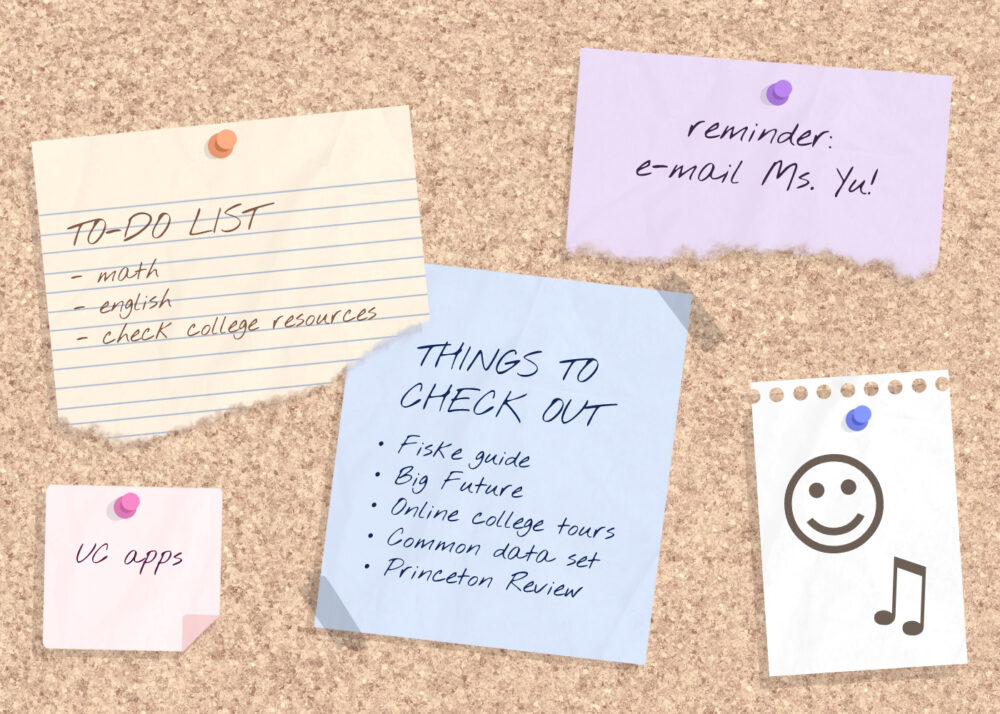
By Cate Meister
COVID-19 has transformed the college applications and admissions system. From financial aid to determining which colleges to apply to, students are now faced with important decisions more than ever. This year, students have dealt with challenges unique to the pandemic-era world: it’s difficult to visit colleges, take standardized tests and keep up with the constantly developing college admissions system.
To help alleviate some of the stress that comes with preparing for college admissions and determining what college might be right for you, here are five noteworthy resources to help you navigate the ever-changing world of college applications.
Online College Tours
Because of the COVID-19 pandemic, students are not able to visit the campuses of the schools to which they have applied or are considering applying. Luckily, many colleges have adopted online tours and visit days.
For example, UCI has an interactive video tour that allows students to explore its campus virtually. UCLA, along with a multitude of other colleges, has created virtual tour days that students can sign up for that allow prospective students to interact with faculty and current students of the college.
Virtual college tours can be especially helpful not only because of the pandemic but also because they are easy to complete and usually free of cost. Students interested in applying to out-of-state colleges will find that online college tours are useful since they don’t have to actually travel to get a sense of the campus and the environment.
BigFuture
BigFuture is one of the many services that the College Board website provides for students. Even if you don’t plan to take AP tests or the SAT, making an account with the College Board can be incredibly helpful because it gives you access to college planning resources like BigFuture.
Designed to help students navigate the college application process, BigFuture allows students to explore potential majors and career interests, find colleges based on criteria that they choose and determine which scholarships they are eligible to apply for via the scholarship search.
One of the most helpful tools that BigFuture offers is the Expected Family Contribution Calculator, which gives a preview of what paying for college might look like for a student.
The Common Data Set
Each year, universities publish a statistical report on their school’s demographics, costs and tuition, financial aid, standardized testing—requirements needed for admission, and really, anything a student looking to apply to a college would need to know about.
This report, known as the Common Data Set (CDS), gives students a way to uniformly compare colleges based on the information found in their CDS. Most colleges provide their CDS somewhere on their website.
The CDS most notably provides a specific list of what a college will consider when admitting—or rejecting—students and to what extent its admissions board will use each factor. The list of factors, which is the same on every college’s CDS, includes but is not limited to GPA, class rank, essays, standardized test scores, extracurricular activities, volunteer work and teacher recommendations.
Colleges rank each factor on a scale that ranges from “not considered” to “very important.” For example, according to Stanford’s CDS, the rigor of secondary school records is very important, while work experience is merely considered. Although a college’s CDS can often be lengthy and difficult to read through, the information it provides is incredibly beneficial.
SAT and ACT prep books
A wide variety of standardized testing books have been developed to help students prepare for both the SAT and the ACT.
One popular prep source is The Princeton Review, which offers thorough prep books for both tests that break down their content. Even though the vocab-memorizing days of the old SAT are gone, it’s still important for students to know how to take the test. Prep books tend to be on the longer side, but reading them from start to finish and completing practice exams and activities in the book can help boost your standardized test scores.
Prep books provide a cheaper alternative to hiring a tutor or enrolling in expensive programs designed to raise SAT and ACT scores. Prep books are especially useful in conjunction with practice test books, which contain full-length SATs and ACTs so that students can assess themselves.
“Fiske Guide to Colleges”
Edward Fiske’s annual publication consists of thorough evaluations of over 320 colleges across the US and abroad. “Fiske Guide to Colleges” is less helpful when it comes to comparing the costs and tuitions for schools; however, it offers good descriptions of what student life is like at a college.
The Fiske Guide offers valuable insight about clubs and student-led organizations, student demographics, Greek life, location and setting and the general atmosphere of a college. Filled with informative quotations from actual students, Fiske takes the time to exhaustively assess the ups and downs of student life at almost any given four-year college in the U.S.
The guide also includes a quiz to understand what values matter to you in a college, popular majors and other programs, ratings of colleges based on cost and debt, acceptance levels, average SAT and ACT scores and financial aid rates. Students looking to find out what actually attending a university might be like should consider purchasing a copy of “Fiske Guide to Colleges.”





